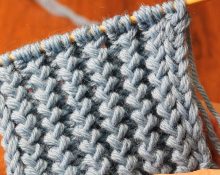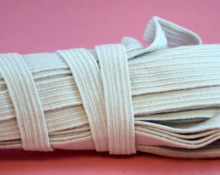A sweater is a universal and all-season clothing. For cold winters, choose models knitted from thicker yarn; for warmer seasons, knitwear or acrylic. But over time, any product develops one unpleasant feature - the elastic bands at the bottom and on the cuffs stretch.
Let it go sweater It still keeps you warm, but it doesn't look quite as good as you'd like. You shouldn’t rush things and classify your favorite thing as out of use: it can still be fixed. How? Read about it below.

A stretched elastic band on a sweater is not a death sentence
Before you begin resuscitation, it is important to understand why the elastic band became deformed. This can be blamed on:
- Quality and properties of yarn. If the sweater was knitted from low-grade threads, then you should not even think about the reason why the elastic bands stretched - it is obvious. It’s a completely different matter when the yarn is of high quality, but is not elastic, or, on the contrary, is prone to changing shape.Then it all depends on how often and how carefully the item was worn and washed.
- Incorrect care. Everyone knows that sweaters made from natural yarn require delicate cleaning and the use of special products. Otherwise, the item will become deformed after the first wash.
- Frequent wear. Don't be surprised that your favorite sweater, which you literally never take off, will eventually turn into a shapeless hoodie. Intensive use leads to the fact that the wear time is significantly reduced.
In addition, it is worth noting the habit of many people to pull the bottom and sleeves of their sweaters as low as possible. By constantly tugging on the elastic bands, you should not hope that they will remain strong and elastic for a long time.
What to do if the elastic band on your sweater is stretched
There are several ways to restore the former attractiveness and reduce the deformation of the product. Let's take a closer look at each of them.
Strengthening with threads
If it happens that the bottom of your favorite sweater has stretched out, you can really fix everything with the help of elastic threads, which can be purchased at any sewing store. It must be knitted into the product from the wrong side. It is better to do this with a crochet hook or a blunt needle (embroidery). Simply pull the yarn through the knit stitches of each row and tighten slightly. You can also insert fastening loops with a crochet hook through half of the loop. The main thing is that the elastic thread is not visible on the front side of the product.
Important! If the elastic is made using the 1*1 technique, the reinforcing base must be laid at equal intervals through the halves of the loops.

@lifehacker.org.ua
Wash
A product that has lost its former shape can be washed in an automatic washing machine by selecting a special mode for this. It can be "delicate" or "wool".The main thing is not to forget to place the sweater in a special bag and use the appropriate washing products. After the cycle is completed, the item must be carefully laid out on a terry towel, leveling the top and moving the elastic seams tightly together. No spin!
Important! For knitwear you can choose a temperature of 60 degrees, for wool - 30.
Suitable for restoring the elastic shape of sweaters and hand washing. The main thing is to place the item in water that is 15 degrees higher than what is indicated on the tag. Soaking should last from 15 to 30 minutes. After the time is up, it is transferred to a container with cold water, rinsed and leveled on a terry towel, leaving to dry completely.
Advice! The sweater does not have to be completely wet. Only those parts that have been deformed can be dipped into water.

@id.everaoh.com
If you are unlucky enough to encounter a stretched elastic band on synthetic or acrylic material, the situation will most likely not be corrected. Such materials do not have the properties of returning to their original form.
To finish, we want to share a little trick. If you knit yourself, then when creating the elastic, use knitting needles one size smaller than those used to knit other elements. During wear, this will help extend the life of the cuffs and hem.


 0
0





